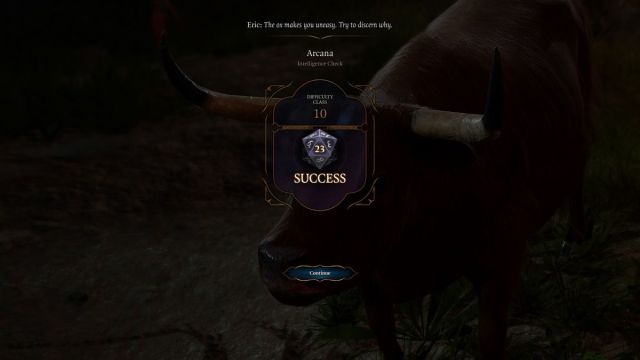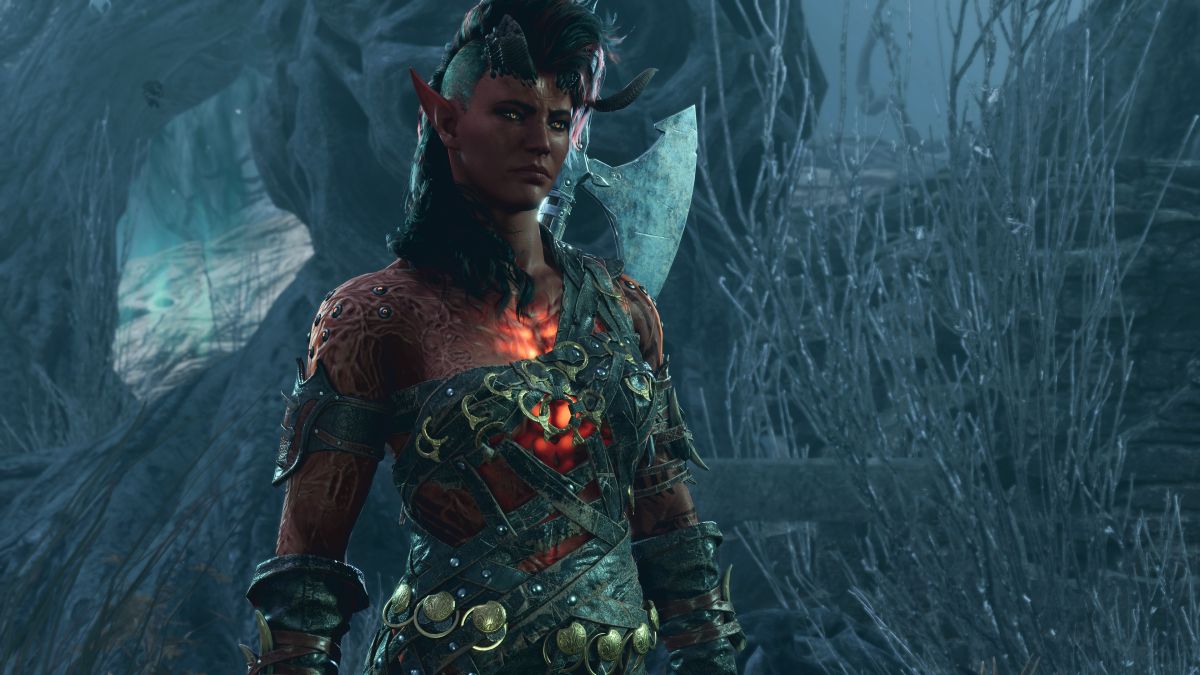Baldur’s Gate 3 is out of Early Access. Larian Studios’ take on the classic Dungeons & Dragons series sees two role-playing giants collide, with all the entwined legacy and carryover you might expect. But in its early hours, what’s impressing me most is how Larian keeps the party moving towards goals, both grandiose and small.
I’ve only had a few days with the launch version of Baldur’s Gate 3, so this isn’t comprehensive by any means. I’m writing this after just having retread Act 1, the same area that was in the Early Access but feels noticeably different in launch. I’ve got more on that in a write-up here, that’s also angled a bit more towards returning players.
For these day-one impressions, I wanted to speak a bit more to newcomers. Not the folks who have been poring over community updates, or posting anxious forum memes counting down days to launch, or who have hundreds of hours in the EA already. If you feel intrigued by the allure of a big, high-production RPG with several legacies behind it—or maybe you just saw the bear scene and said “I’m in”—this one’s for you.

Bringing the table to the computer
Baldur’s Gate 3 marks the continuation of a classic RPG series that has lain dormant for years, Baldur’s Gate. It was one of the most notable BioWare games in the pre-Mass Effect days, and its second entry still garners acclaim.
Larian, meanwhile, has made a name on continuing the CRPG (computer role-playing game) legacy through its Divinity games. Divinity: Original Sin 2 was a superb entry, and now, with Baldur’s Gate 3, Larian has been given the keys to a beloved classic.
It opens like most role-playing games do; make a character (or choose a pre-made Origin character), customize them, and set off on a journey. One thing I’ve always really liked about Baldur’s Gate 3 is that it starts with immediate tension. You have been kidnapped by mind flayers and infected with a tadpole. This parasite will, sooner or later, kill your character and turn them into a mind flayer. You want to avoid that, if at all possible.

So after an intense escape sequence, you crash land on a beach and start to get a bearing on your surroundings. You can gather up a party of likewise infected adventurers and team up, forming a ragtag crew of tadpole-infested heroes. Well, maybe not so heroic.
Ain’t no Long Rest for the wicked
The initial set-up works great for giving you a personal motivation to venture forth, and to bring a party together. What keeps it compelling are the interpersonal interactions within your party. These aren’t happy adventurers, brought together by a love of the sport. In fact, you’re reminded fairly often that your reason for banding together is fairly singular: the tadpoles you’ve all got in your heads.
But this occassional dissent and tension really keeps the party atmosphere alive. Everyone has their own goals, ideas, and motivations that conflict with each others’. The Githyanki warrior Lae’zel is one of your earliest companions, and wants to seek out her creche, where she says they can cleanse away the tadpoles. The cleric Shadowheart, however, doesn’t approve of this idea, or maybe just disapproves of Lae’zel’s methods. Others want to seek a healer, one skilled enough to remove the parasites.

Sometimes, these conflicts come to a head, and result in real, tangible consequences. Baldur’s Gate 3 likes to leave scars and reminders of big moments, and I appreciate that. To be clear, there are plenty of funny, engaging, endearing, even intimate moments you can experience between your avatar and these party members. But it’s the dynamics that make it all work so well.
No time to die
Outside of dialogue and cutscenes (though sometimes in them too), Baldur’s Gate 3 feels like playing a virtual tabletop campaign. You venture through a large area in the first act, encompassing a druid’s grove, a vicious goblin camp, temple ruins, and more. There is, frankly, a lot to see and do. It can feel overwhelming, even, but in a good way. There’s something around every corner, and NPCs are frequently worth talking to and gleaning information from.
A lot hinges on die rolls, as you are playing what is essentially Larian’s house rules for Dungeons & Dragons 5E. Modifications have been made to accommodate a solid virtual experience, but you will be rolling for attack hits, damage, resistance, saving throws, and dialogue checks. Heck, sometimes you’ll be walking around and you’ll get a check over your character’s head. Nothing instills fear like a sudden failed Perception check.
These can feel good and bad in equal measure, usually through whether you succeed or fail. Much like Disco Elysium, though, I think Larian does a great job in making failures feel important. Yes, I absolutely restart battles if a teammate goes down. But if I fail a roll that puts me into combat, or miss a persuasion attempt, I’ll often play it out just to see the result. Rather than feeling like a win-or-lose, Baldur’s Gate 3 does a pretty decent job at making the act of rolling and playing out the consequences feel worthwhile, in and of itself.

Critical hit
Combat is turn-based, closer to Original Sin than previous Baldur’s Gate games. Though the lack of real-time with pause might frustrate some, I think it works really well, mostly because it’s how tabletop works, and what a lot of those fans are familiar with seeing.
What gets more complex is how intricate combat can become, and quickly Baldur’s Gate 3 will punish a misstep. It’s here where I think some familiarity with D&D helps. I’ll freely admit, when I started Early Access, I took what I call the Pokémon Red/Blue approach. When I first played Pokémon, I would only learn offensive moves, foregoing any defensive or utility options. It wasn’t until later in life that I learned oh, hey, those moves are actually worthwhile.
Same goes for Baldur’s Gate 3, where things like gaining Advantage (roll two die and take the highest outcome) or inflicting Disadvantage (roll two die and take the lowest) can make a difference. When an angry paladin is bearing down on your feeble Wizard Gale with pockets full of Divine Smite to unleash, you’ll be thankful for any crowd-control or enfeebling spells you might have on deck. Reading spells, doing research, and maybe pausing to consider your approach and concocting a better one are all crucial to surviving some of Baldur’s Gate 3‘s harder fights.

Something ends, something begins
All of this is to say, I think Baldur’s Gate 3 is pretty great so far, if you’re able to invest in it. It’s filling a pretty massive craving I’ve had; for a good CRPG, for something with BioWare-adjacent companions and interactions, and for something with a clear love for the role-playing craft at its heart. If Final Fantasy XVI was a vision of what role-playing games could be through embracing new genres and ideas, Baldur’s Gate 3 shows what a CRPG can still do with the right team behind it.
Of course, that’s all still early. This is only a slice of what Larian has said is an absolutely massive game. And I’ve certainly seen teases of what’s on the road ahead that intrigue me, from a shadowy cabal of servants to the mysterious Absolute, to a stranger in my dreams, to stories shared with companions by the campfire. By all accounts, Baldur’s Gate 3 certainly feels massive. There are some issues too, to be clear. I’ve seen some odd bugs and glitches, strange lighting situations, and a few other noticeable technical issues.
But whether you just want to experience what a high-production CRPG might have to offer, or romance some companions, or play some virtual D&D, I do think Baldur’s Gate 3 brings something for every one of those interests to the table. Embrace the successes and failures, talk to party members, read the spell text, and you’ll be surprised how quickly you’re taken in. It’s a great start, and I’m hopeful that Larian can keep up the pace moving into the later areas of Baldur’s Gate 3.








